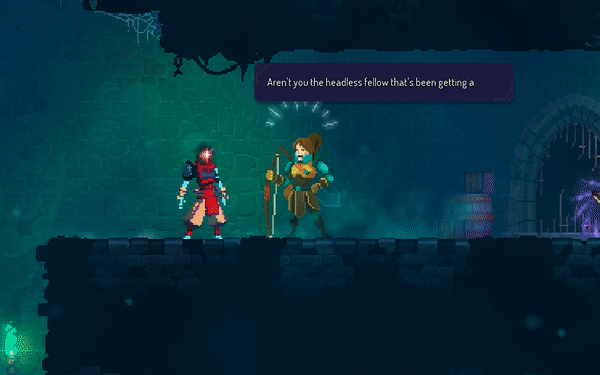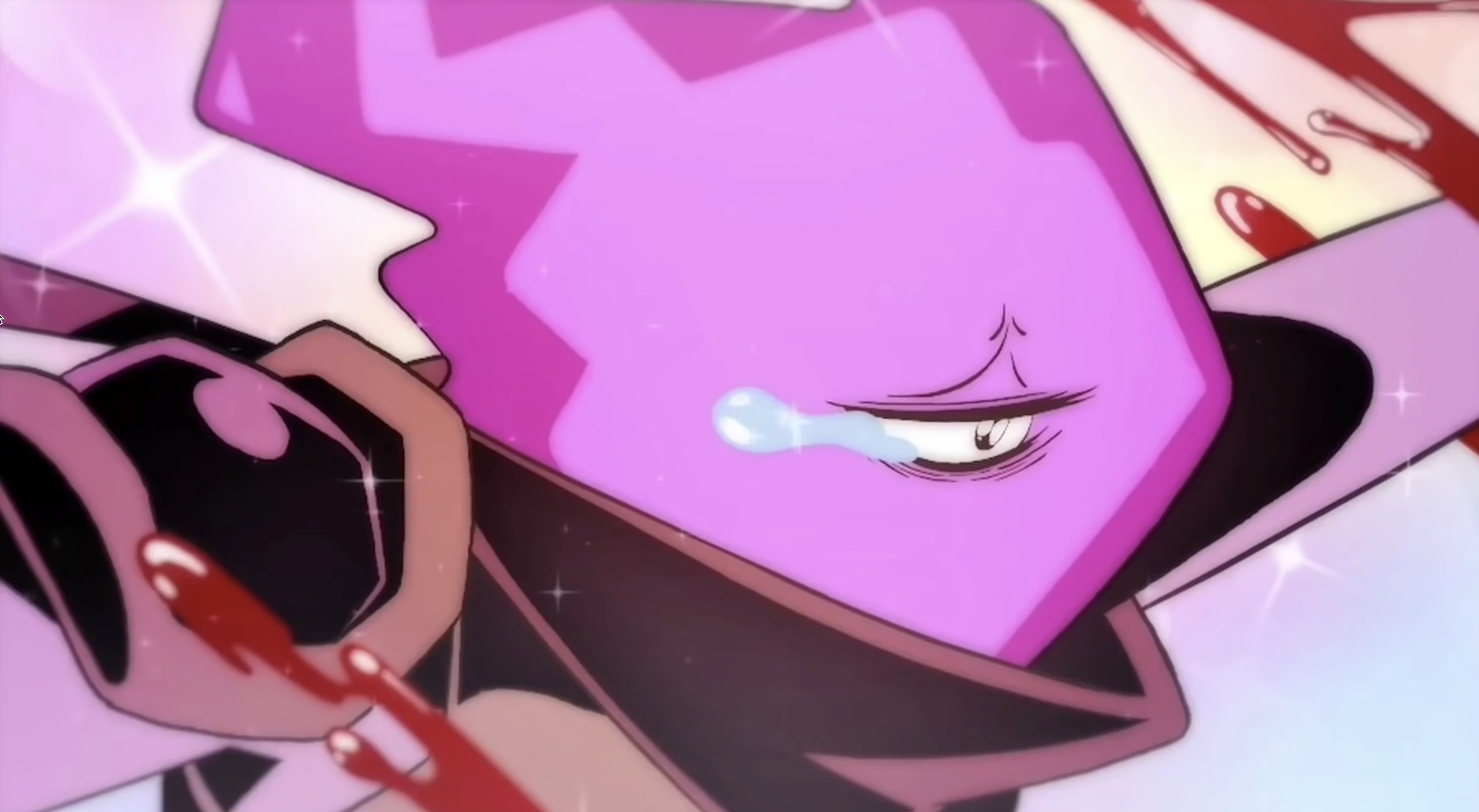Prior to playing Dead Cells, I had watched a few of the animated trailers for the game. Dead Cells, as a game, exists amongst a sea of promotional material and advertisements for its contents. While we have primarily kept our analysis of games focused on the game itself thus far, the impact the animated trailers had on my play experience made me consider how our role as players is often intertwined with our role as consumers of mixed media. I think there are meaningful stakes in understanding how these advertisements, which do not showcase gameplay, prime players’ experiences of Dead Cells as a roguelike. In particular, I would argue that the animated trailers for Dead Cells positions the game, and its subsequent DLCs, as “comedy” roguelikes, where death and struggle are exaggerated, humorous spectacles.

Watching Vs. Playing
When watching these trailers, viewers passively consume a pre-orchestrated death, rather than interactively causing the Prisoner’s demise. When the viewer is distanced from the anxiety of trying to keep the Prisoner alive, they are able to more fully immerse themselves in the dark comedy of the seemingly insurmountable challenges he is facing. Many of these trailers follow a similar narrative structure: the Prisoner struggles against hordes of enemies, often displaying incredible agility and power, only to die at the hands of “bad luck”—coming in the form of the sudden appearance of a huge monster or silly mistake. This somewhat slapstick comedy style, paired with the humorous expressions of the characters, gives the Prisoner’s endless cycle of dying a hilarious charm. This characterization and atmosphere carries over into the game itself.
How does the game follow the comedic tone set by the animated trailers?
As a non-verbal character, the personality of the Prisoner is hinged upon the animated gestures he makes. The player cannot not choose to “shrug” or “point;” they choose to engage in dialogue or knock on a door and an involuntary gesture from the Prisoner follows. Drawing from our reading, “Game Mechanics, Experience Design, and Affective Play,” a mechanic serves as “a point of departure from which a variety of procedural rhetorics can proliferate” (176). Since the play has no control over gestures, they resist being considered a mechanic themselves. These gestures act as hitchhikers on mechanics, moments when players choose to exercise their agency, and momentarily suspends the player’s agency.
I argue that these animations reinforce a particular reading of the character: the Prisoner’s moments of frustration and exasperation are funny. He gesticulates during conversations and throws his hands in the air when he cannot open a door. (See examples of this below)

Since the player does not choose to “shrug” or “point;” these brief moments re-positions players as spectators of comedy. However, in these moments, players are not passive—these gestures are interactively productive and do not shift players into the realm of passive engagement that they occupied when watching the trailer. These short animations act as a communicative moment between the player and the avatar. The gestures are a performative sign of awareness of the player.
As the player begins to self-identify with the avatar, the accumulative effect of these gestures is to encourage players to view their own experiences of struggle and death in the same way, as darkly comedic. The frustration of encountering an unlucky randomly generated room can turn into a moment of laughter rather than anger. Chaotically running through sections with hoards of monsters behind you becomes hilarious rather than ‘unfairly’ difficult. While the question of whether avatars can ever be, or should be, neutral participatory spaces remains, I believe these animated gestures productively prime the player and build upon the persona of the Prisoner presented by the animated trailers. Their presence in the game facilitates an atmosphere and mindset that makes the pain of dying endlessly a little bit easier to laugh off.
Works Cited:
Jagoda, Patrick, and Peter McDonald. “Game Mechanics, Experience Design, and Affective Play.” The Routledge Companion to Media Studies and Digital Humanities, 2018, pp. 174–182., https://doi.org/10.4324/9781315730479-17.
PlayStation, director. YouTube, YouTube, 26 Jan. 2021, https://www.youtube.com/watch?v=rKr3QyONR60&ab_channel=PlayStation. Accessed 10 Oct. 2021.


Emily, I love that you brought up the animated trailers! I watched them halfway through the playing of the game, and despite already having a stake in completing the game, they made me love the character, and therefore the game, more. It made me want to jump back into the game and explore more after seeing the gorgeous art and the personality of the character expanded on. While we talked in class (and argued in the Dead Cells group) about Dead Cells, like a lot of rogue-likes, was mechanics first and foremost and gameplay secondary or tertiary, I do think this discounts the emphasis on the game that story and character do have. Like the Hades game, character can be a draw. The small moments of the Beheaded showing their personality (though the thumbs up and shrugging etc) connect me as a player to the character I’m playing and increases my desire to follow their journey through the difficult roguelike process.